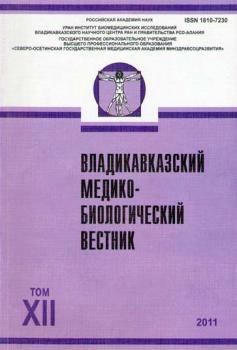The analysis of physical culture lessons timetable in the comprehensive institutions of RNO-Alania, theis timekeeping and pulsometric investigation was carried on. The complex evalnation of sports halls showed, that 13,2% concerns to the 1 group; 25,4% concertns to the 2 group and 61,4% concerns to the 3 group in Vladikavkaz city. Among the school districts of the country there are - 31.3%, 44.8% and 23.9%, respectively. The most common disorders in the evaluation of physical culture lessons in the weekly and daily timetable was placing on Monday (40.7%) and the first lesson (50%). The time-keeping of the lesson of physical culture allowed to determine that the structure is maintained in 50% of cases, 73.2% of which is fitted to the district school, and 26.8% – to the schools of Vladikavkaz city. The most common violations of the lessons were: the absence of the introduction and concluding parts (67%); low motor density (from 47.5 to 70%). The maximum increase of heart rate at the end of the main part of the lesson composed from 30 to 60% in 83.3% of cases.
physical culture, comprehensive institution, children and adolescents, time-keeping, pulsometric study, motor density.
Здоровье детей и подростков в значительной мере определяется характерным для данного возраста уровнем двигательной активности. Известно, что недостаток движений у детей школьного возраста является одной из причин нарушения осанки, ухудшения функционального состояния стопы, появления избыточного веса и других нарушений в физическом развитии. Недостаточная двигательная активность снижает функциональные возможности сердечно-сосудистой и дыхательной систем ребенка, в результате чего появляется неадекватная реакция кардиоваскулярной системы на нагрузку, уменьшается жизненная емкость легких, замедляется двигательное развитие. Малоподвижный ребенок владеет меньшим объемом двигательных навыков, обладает низким уровнем двигательных качеств, меньшей силой и выносливостью, быстротой и ловкостью [1, 3]. Анализ научной литературы позволил установить,что в настоящее время более 70% учащихся общеобразовательных школ не занимаются регулярно спортом [1]. Более 1,5 миллионов учеников посещают школу, но не занимаются физической культурой на уроках. Сотни тысяч школьников по состоянию здоровья отнесены к специальной медицинской группе и, как правило, освобождены от занятий физической культуры. Хотя именно они, в первую очередь должны активно заниматься физической культурой и спортом и тем самым укреплять здоровье, физическое развитие и физическую подготовку [1, 2, 3]. Среди важнейших задач профилактической медицины сегодня является формирование навыков здорового образа жизни и физического воспитания. Учитывая то, что основы этих знаний закладываются в детском возрасте и в большей части в образовательных учреждениях, мы посчитали целесообразным изучение условий и методики проведения уроков физической культуры в общеобразовательных учреждениях республики.
1. Kleschina Y. Of the role of physical education in school health strengthing. X Russian Congress of hygienists and health officers. Moscow. 2007; 587-9.
2. Kuchma V. R. Hygiene of children and adolescents: a textbook. M.: GEOTAR Medicine. 2010; 480.
3. Naniyeva A. R., Khetagurova L. G., Kusova A. R. et al. The state of psychophysiologic functions and working capacity in final-year scoolchildren of Vladikavkaz city in various seasons of the year. Vladikavkaz Medical and Biological Bulletin. 2014; 19(28): 37-44.
4. SanPiN 2.4.2.2821-10. Sanitary epidemiologic requirements to the conditions and the organization of training in comprehensive institutions.Moscow.2010.
5. Tuaeva I. Sh. The organization of physical training and toughening up the children and adolescents in preschool and comprehensive institutions. The methods of hygienic study and evaluations: teaching handbook. Vladikavkaz, 2014; 83.
6. Yanushanetc O. I., Gribanova A. N., Bogareva M. S. et al. The quality of life of students of educational institutions with profound study of certain subjects.The health and safety of children and adolescents. Current issues, tactics and strategy of action. IV Russian Congress of school and University medicine. St. Petersburg. 2014; 393-5.





